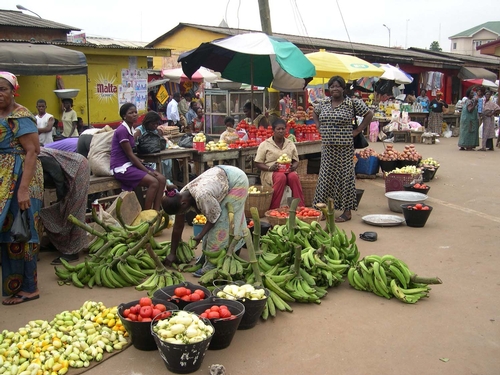Posts Tagged: Adel Kader
Postharvest technology is something of a mystery
Postharvest technology. Hmmm. What does that even mean to you? Like most people, you’ve probably never thought about it, but it actually affects you every day. At least whenever you eat fruits and vegetables, and let’s face it, we all need to be eating more fruits and vegetables.
Working at the Postharvest Technology Center, I often think about how to spread our mission of how to reduce postharvest losses and improve the quality, safety and marketability of fresh horticultural products. Part of doing this is educating consumers about making good choices so they have a better experience eating fruits and vegetables. And, if consumers have a better experience with fruits and vegetables, we eat more of them. If we can create demand at the consumer end, it will trickle through to the people that handle your produce: processors, retailers, distributors, carriers, marketers, shippers and finally growers.
I spoke with Jim Thompson, who wrote “From the Farm to Your Table: A Consumer’s Guide to Fresh Fruits and Vegetables” along with Adel Kader, two distinguished experts in the field of postharvest technology. Thompson said they wrote the publication knowing that, “For most consumers, it’s kind of a mystery what influences the quality of their produce. This publication answers some of the questions of how to make good choices at the market and at home.”
Thompson adds, “There are many things that can steal quality from produce. And it starts at the farm.”
The type of cultivar the farmer chooses to plant and what kind of soil, temperature and light conditions, irrigation and fertilization practices at the farm affect flavor and nutritional quality. When the product was harvested, how it was handled prior to arrival at your market, and how your market stores the product all influence the quality of your produce.
You certainly know which market in town has the best produce section, and it’s important to you. In fact, according to the 2011 National Grocers Association Consumer Survey Report, “Consumers say they are keeping health a priority—and 91 percent regard a stellar produce department as a ‘very important’ factor in where they buy groceries. This is precisely the same percentage as a year ago, which represented a dramatic five-point jump from the 86% level of two years ago. While the recession may have withered wallets, it hasn’t hurt consumers’ resolve on this measure.”
If you’d like to learn more about how you can make the most of your fresh fruit and vegetable experiences, the Postharvest Technology Center is offering a 40 percent discount (making it only $4.20!) on “From the Farm to Your Table” through the end of September 2012. And as long as you’re there, our other consumer publication, the poster “Storing Fresh Fruits and Vegetables for Better Taste” (just $1) would be a lovely addition to your refrigerator!
Please contact us at (530) 754-4326 or postharvest2@plantsciences.ucdavis.edu if you’re interested in ordering multiple copies for a nutrition, health or cooking class or you can purchase them through our online bookstore.
Produce handling in developing economies
There is a wide schism between the sleek mechanical harvesting machines that briskly traverse California’s fertile croplands versus the field worker with a machete and head-basket, or possibly a donkey laden with woven baskets, that is still most commonly found in many nations.
Produce loss continues to be a significant problem. Worldwide, it is estimated that as much as one-third of the produce grown is never consumed by humans (Kader, 2005). Many logistical challenges contribute to this loss, including: ineffective or absent cooling systems, slow and rough transportation, physical damage from rough handling, and poor sanitation conditions.
In 2010, one of the most popular free titles available on the Postharvest Technology Center’s website was “Small-Scale Postharvest Handling Practices: A Manual for Horticultural Crops.” Written by Lisa Kitinoja and Adel Kader, and currently translated into 10 languages, this title was downloaded by over 22,000 readers last year. While this useful resource is very popular in the United States among small-scale farmers, over 8,000 readers benefitted from the useful content translated into Indonesian, 4,000 from the Vietnamese translation, and over 3,000 from the Arabic translation. Readers learned information about the curing of tuber crops, designing picking poles and catching sacks to gently harvest fruit, and efficient designs for packinghouse layout. (Link to all ten translations are found under the section “Small-Scale Postharvest Practices” at: http://postharvest.ucdavis.edu/Pubs/publications.shtml.)
“Many simple practices have successfully been used to reduce losses and maintain produce quality of horticultural crops in various parts of the world for many years,” asserted Lisa Kitinoja of Extension Systems International. “You don’t necessarily need costly handling machinery and high-tech postharvest treatments to be able to deliver quality produce to the marketplace. However, effective management during the postharvest period is key to reaching the desired objective.”
While most California produce shoppers are grateful for the quality and variety available in our markets, it’s nice to know that an effort is being made to improve the produce available to others not quite as fortunate as we.
Photo: Kumasi retail produce market, courtesy of Adel Kader.




